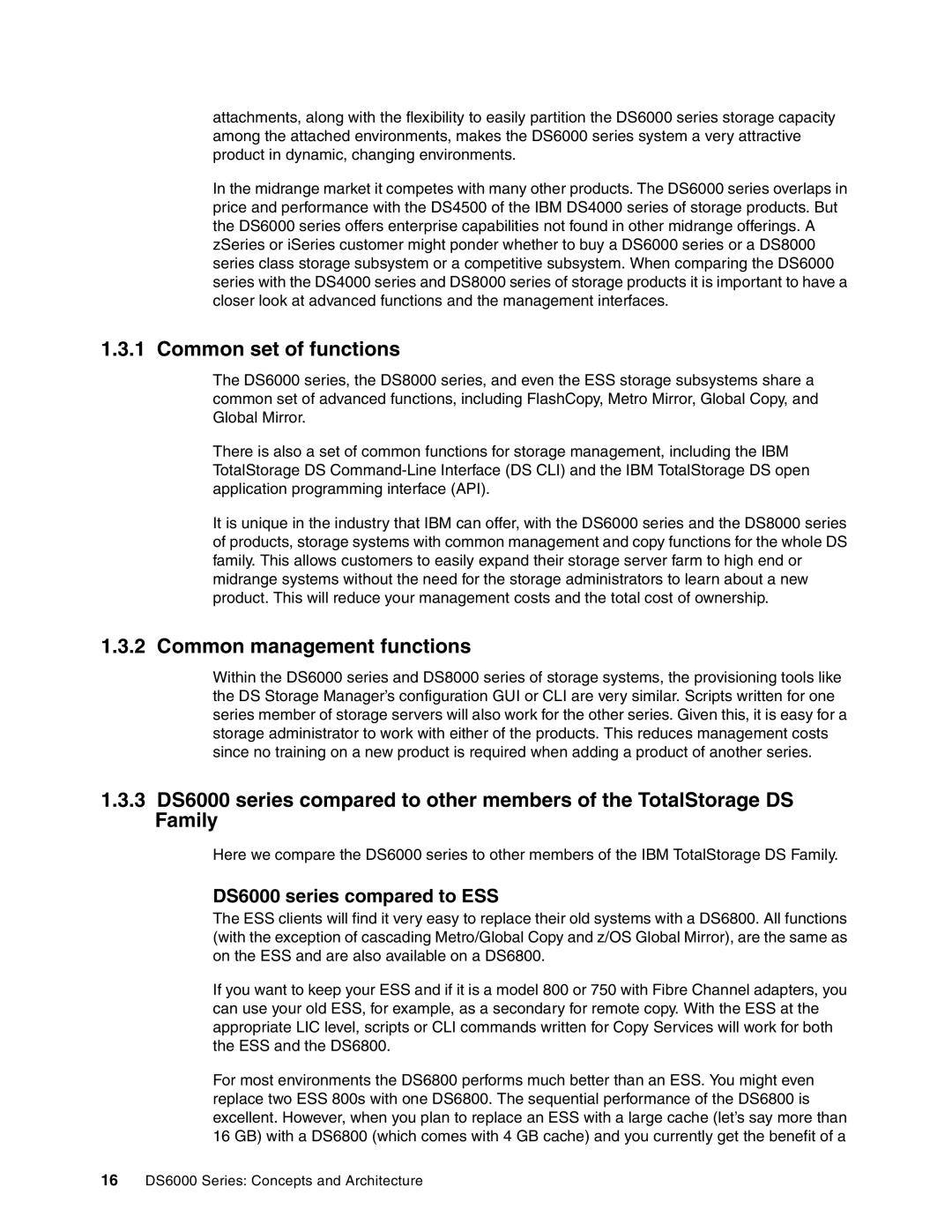attachments, along with the flexibility to easily partition the DS6000 series storage capacity among the attached environments, makes the DS6000 series system a very attractive product in dynamic, changing environments.
In the midrange market it competes with many other products. The DS6000 series overlaps in price and performance with the DS4500 of the IBM DS4000 series of storage products. But the DS6000 series offers enterprise capabilities not found in other midrange offerings. A zSeries or iSeries customer might ponder whether to buy a DS6000 series or a DS8000 series class storage subsystem or a competitive subsystem. When comparing the DS6000 series with the DS4000 series and DS8000 series of storage products it is important to have a closer look at advanced functions and the management interfaces.
1.3.1 Common set of functions
The DS6000 series, the DS8000 series, and even the ESS storage subsystems share a common set of advanced functions, including FlashCopy, Metro Mirror, Global Copy, and Global Mirror.
There is also a set of common functions for storage management, including the IBM TotalStorage DS
It is unique in the industry that IBM can offer, with the DS6000 series and the DS8000 series of products, storage systems with common management and copy functions for the whole DS family. This allows customers to easily expand their storage server farm to high end or midrange systems without the need for the storage administrators to learn about a new product. This will reduce your management costs and the total cost of ownership.
1.3.2 Common management functions
Within the DS6000 series and DS8000 series of storage systems, the provisioning tools like the DS Storage Manager’s configuration GUI or CLI are very similar. Scripts written for one series member of storage servers will also work for the other series. Given this, it is easy for a storage administrator to work with either of the products. This reduces management costs since no training on a new product is required when adding a product of another series.
1.3.3DS6000 series compared to other members of the TotalStorage DS Family
Here we compare the DS6000 series to other members of the IBM TotalStorage DS Family.
DS6000 series compared to ESS
The ESS clients will find it very easy to replace their old systems with a DS6800. All functions (with the exception of cascading Metro/Global Copy and z/OS Global Mirror), are the same as on the ESS and are also available on a DS6800.
If you want to keep your ESS and if it is a model 800 or 750 with Fibre Channel adapters, you can use your old ESS, for example, as a secondary for remote copy. With the ESS at the appropriate LIC level, scripts or CLI commands written for Copy Services will work for both the ESS and the DS6800.
For most environments the DS6800 performs much better than an ESS. You might even replace two ESS 800s with one DS6800. The sequential performance of the DS6800 is excellent. However, when you plan to replace an ESS with a large cache (let’s say more than 16 GB) with a DS6800 (which comes with 4 GB cache) and you currently get the benefit of a
16DS6000 Series: Concepts and Architecture
